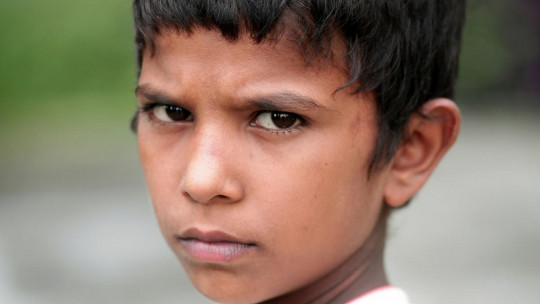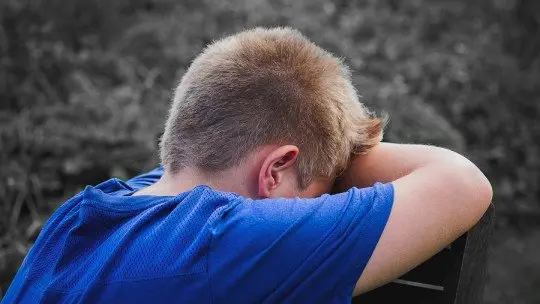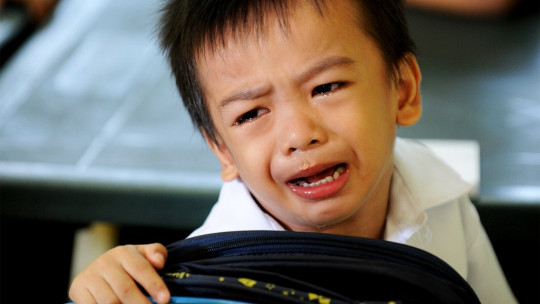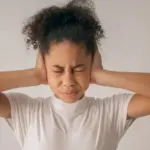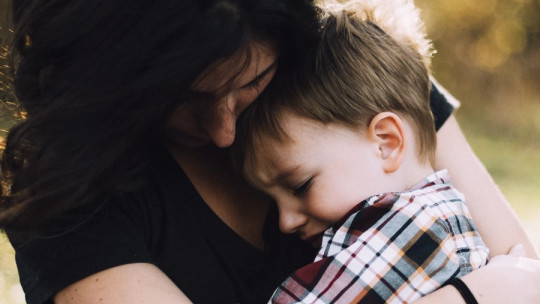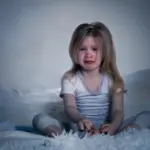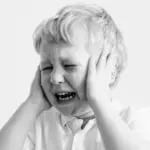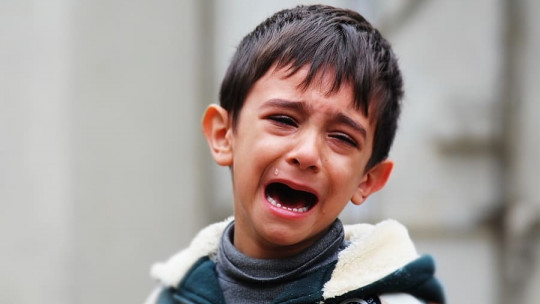
Childhood separation anxiety is, in short, the discomfort that some boys and girls show when they are physically separated from their attachment figure. In the first months of life it is completely normal for an experience of this type to appear when fathers and mothers momentarily distance themselves from the baby, but after a certain age, it can constitute psychopathology.
This anxiety can manifest itself through different behaviors, such as refusal to leave the house, nightmares related to separation or somatic pain (such as a headache).
In this article you will learn better how to identify separation anxiety disorder in childrenwhat characteristic features its diagnosis presents and what symptoms can be observed in it.
What is childhood separation anxiety?
Separation anxiety is classified in the fifth edition of the Diagnostic Manual of the American Psychiatric Association (DSM 5) as a disorder within the category of anxiety disorders. The identification and intervention of this condition is relevant, since it is one of the first emotional imbalances associated with anxiety to appear in the early stages of life, and can lead to other more serious problems.
The main symptom of this pathology is excessive and inappropriate fear or anxiety for the level of development of the individual, in relation to separation from those people for whom they feel or have attachment. In addition, three additional symptoms or behaviors must be present that we will mention later.
As with other mental disorders, the symptoms must be present for a minimum of time, in this case at least 4 weeks in children and adolescents. Currently, the diagnosis can also be made in adulthood, but in this population it will be necessary for the condition to last at least 6 months for the problem to be diagnosed as separation anxiety disorder. Likewise, the pathology causes discomfort or impairment in some of the areas of the subject’s life.
The DSM 5 places the prevalence of this disorder between 0.9 and 1.9% of the population, being much higher in childhood, with a percentage of 4%. Separation anxiety disorder is considered more common in children under 12 years of age compared to other anxiety disorders. If we look at the clinical population, that is, those that have been diagnosed, we see a greater number of affected men, but if we take into account the general population, all subjects, it is more common in women.
The age at which the greatest presence of this pathology is observed is 9 years, although an interval of 6 to 11 years is proposed as a period of greatest risk for developing this type of anxiety. It should also be noted that separation anxiety It is a relatively normal phenomenon between 8 and 18 months of age, and is not considered pathological..
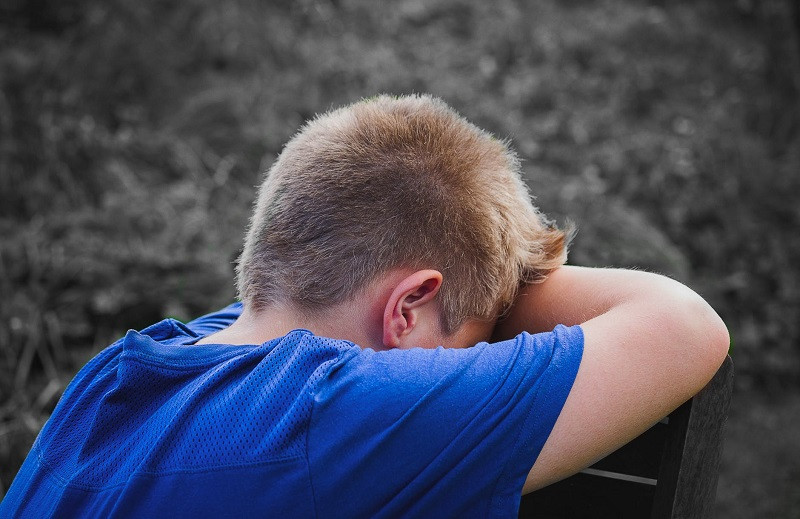
What behaviors are typical in separation anxiety?
In order to identify and make the diagnosis of separation anxiety disorder, it is important to look at some behaviors or actions of the child in situations in which they are no longer physically very close to their caregivers. Since it is a type of anxiety that appears in specific situations and given that the age of the subject who may present the pathology makes it difficult for him to express what he feels, It will be essential to have the opinion and observation of third parties, such as parents or teachers..
As we have already said, the main symptom is the presence of anxiety or fear on the part of the subject regarding the possibility of separation or separation from a person or people with whom they have a close bond, usually the parents. This fear is expressed through different behaviors, of which 3 must be shown in order to make the diagnosis. It is also essential to look at the intensity and duration of the symptoms, since it is pertinent that the discomfort, worry, anxiety or fear is excessive and occurs persistently.
Although all symptoms can appear at any age, we have seen that some are more typical at younger ages and others at later ages. For example, In the period of 5 to 8 years, nightmares are more common; On the other hand, adolescents tend to complain more about somatic discomfort, such as stomach pain.
Let’s see what symptoms help us detect and identify separation anxiety in children.
1. Excessive and repetitive distress when separation from home or attachment figure occurs or is anticipated
It is common for children with this type of anxiety to show anguished by the separation from their attachment figure and even present a lot of discomfort when they anticipate that it may appear, although it has not yet taken place. In this situation, they may appear apathetic, lack motivation, sad and socially withdrawn, that is, they do not interact with people other than their parents.
Such is the discomfort caused by separation that it can manifest symptoms typical of a panic attack such as sweating, trembling or accelerated heartbeat. You can also express fear or discomfort with crying.
2. Excessive and persistent worry about the possibility of losing the attachment person
Children with separation anxiety are very worried about the possibility of losing their parents, being abandoned, or being the thought that your attachment figure may disappear due to harm, illness, or even death.
3. Excessive concern about the possibility that an adverse event will lead to separation from the attachment figure
The child expresses fear or anxiety that something bad could happen to him and cause separation from his bonded figure. In this case it is similar to the previous symptom, since he fears possible separation, but This time the concern is that something will happen to him and not to his parents, for example that he could get lost or be kidnapped by someone..
4. Shows resistance to leaving home
We see how the child repeatedly resists or refuses to leave home for no obvious reason; That is, if the child was bad, his behavior could be justified. Thus, he avoids leaving his home and shows opposition to going to school or any other place even though he may like the activity to be carried out.
5. Has resistance to being alone at home
Likewise, the child shows resistance to being alone at home or with someone other than their attachment figure.
In reference to this symptom, we must take into account the age of the child; This means that we will evaluate his behavior depending on how old he is. If he is small, it is clear that it is not normal to leave him alone at home.
Also note that you will be considered to meet this symptom if you show a refusal to stay alone in a room, even if your parents are at home but in another room. They tend to constantly follow their parents wherever they go, never leaving them alone.
- You may be interested: “How childhood experiences can create insecurities in us”
6. He shows a refusal to sleep outside his house
The child refuses to sleep anywhere other than his own home, although the place is known as a relative’s house. It may also be that he or she resists sleeping away from the attachment figure, and may sleep away from home, but as long as it is with him or her.
In the same way we will observe that they do not want to go to camps, stay overnight at a friend’s house or travel.
7. You have repeated nightmares related to separation
The boy reports having dreams related to separation, loss, from the attachment figure. These nightmares occur repeatedly and persistently and, as we have already mentioned previously, they are more common in younger subjects, between 5 and 8 years old.
- Related article: “The 7 main sleep disorders”
8. Reports repeated complaints of physical symptoms when separation occurs
The child complains of somatic, physical discomfort, such as headache, stomach pain, muscle pain… When the separation of the linked figure is anticipated or when such an event is happening. In this case, it is also important to assess whether this discomfort appears only after separation, that is, only in this specific situation and to verify that it is not a one-time behavior, but rather persists over time and is repeated.
9. Shows trouble going to sleep
It is common to observe that When it comes time to go to bed, children with this problem resist going to bed or ask their parents to stay with them.. They may also get up at night and go to their parents or siblings’ room to sleep with them.
10. It may present other fears
The child may express having other types of fears such as the dark, thieves, accidents, animals or fantastic beings, among others. That is to say, fear of stimuli or elements that may lead to separation from the linked figure.
The solution is to go to therapy
When faced with separation anxiety, the most effective way to overcome the disorder is to attend psychological therapy as soon as possible, so that this alteration does not produce a domino effect, giving rise to other sources of emotional and psychosocial discomfort.
If you are interested in having psychological support for fathers and mothers or are looking for child psychotherapy services, Get in contact with us.

